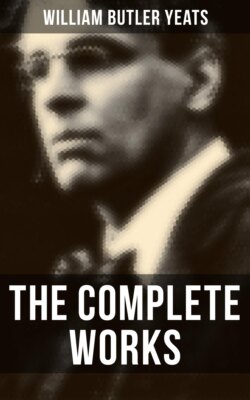Читать книгу The Complete Works - William Butler Yeats - Страница 122
На сайте Литреса книга снята с продажи.
The Valley of the Black Pig (p. 24).
ОглавлениеAll over Ireland there are prophecies of the coming rout of the enemies of Ireland, in a certain Valley of the Black Pig, and these prophecies are, no doubt, now, as they were in the Fenian days, a political force. I have heard of one man who would not give any money to the Land League, because the Battle could not be until the close of the century; but, as a rule, periods of trouble bring prophecies of its near coming. A few years before my time, an old man who lived at Lisadill, in Sligo, used to fall down in a fit and rave out descriptions of the Battle; and a man in Sligo has told me that it will be so great a battle that the horses shall go up to their fetlocks in blood, and that their girths, when it is over, will rot from their bellies for lack of a hand to unbuckle them. If one reads Professor Rhys’ “Celtic Heathendom” by the light of Professor Frazer’s “Golden Bough,” and puts together what one finds there about the boar that killed Diarmuid, and other old Celtic boars and sows, one sees that the battle is mythological, and that the Pig it is named from must be a type of cold and winter doing battle with the summer, or of death battling with life. For the purposes of poetry, at any rate, I think it a symbol of the darkness that will destroy the world. The country people say there is no shape for a spirit to take so dangerous as the shape of a pig; and a Galway blacksmith—and blacksmiths are thought to be specially protected—says he would be afraid to meet a pig on the road at night; and another Galway man tells this story: ‘There was a man coming the road from Gort to Garryland one night, and he had a drop taken; and before him, on the road, he saw a pig walking; and having a drop in, he gave a shout, and made a kick at it, and bid it get out of that. And by the time he got home, his arm was swelled from the shoulder to be as big as a bag, and he couldn’t use his hand with the pain of it. And his wife brought him, after a few days, to a woman that used to do cures at Rahasane. And on the road all she could do would hardly keep him from lying down to sleep on the grass. And when they got to the woman she knew all that happened; “and,” says she, “it’s well for you that your wife didn’t let you fall asleep on the grass, for if you had done that but even for one instant, you’d be a lost man.” ’
Professor Rhys, who considers the bristleless boar a symbol of darkness and cold, rather than of winter and cold, thinks it was without bristles because the darkness is shorn away by the sun.
The Battle should, I believe, be compared with three other battles; a battle the Sidhe are said to fight when a person is being taken away by them; a battle they are said to fight in November for the harvest; the great battle the Tuatha De Danaan fought, according to the Gaelic chroniclers, with the Fomor at Moy Tura, or the Towery Plain.
I have heard of the battle over the dying both in County Galway and in the Isles of Aran, an old Aran fisherman having told me that it was fought over two of his children, and that he found blood in a box he had for keeping fish, when it was over; and I have written about it, and given examples elsewhere. A faery doctor, on the borders of Galway and Clare, explained it as a battle between the friends and enemies of the dying, the one party trying to take them, the other trying to save them from being taken. It may once, when the land of the Sidhe was the only other world, and when every man who died was carried thither, have always accompanied death. I suggest that the battle between the Tuatha De Danaan, the powers of light, and warmth, and fruitfulness, and goodness, and the Fomor, the powers of darkness, and cold, and barrenness, and badness upon the Towery Plain, was the establishment of the habitable world, the rout of the ancestral darkness; that the battle among the Sidhe for the harvest is the annual battle of summer and winter; that the battle among the Sidhe at a man’s death is the battle of life and death; and that the battle of the Black Pig is the battle between the manifest world and the ancestral darkness at the end of all things; and that all these battles are one, the battle of all things with shadowy decay. Once a symbolism has possessed the imagination of large numbers of men, it becomes, as I believe, an embodiment of disembodied powers, and repeats itself in dreams and visions, age after age.
